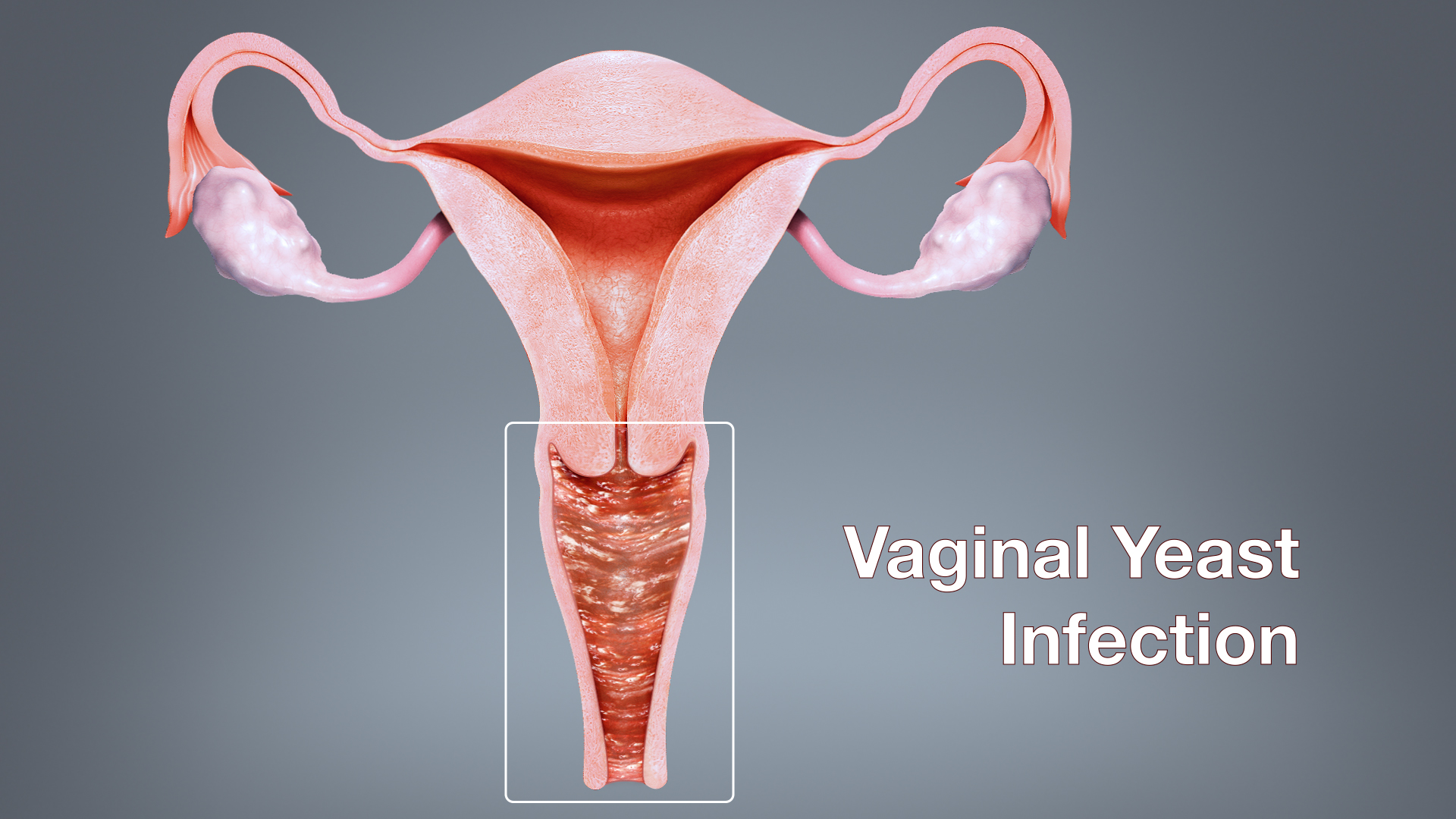Vaginal yeast infection or vaginitis is a fungal infection that is responsible for inflammation of the vagina in women. Discharge and intense itchiness can be experienced by the patients in their vagina and the vulva - the tissues at the vaginal opening. The infection is also known as vaginal candidiasis and affects almost every woman in their lifetime, with a minimum frequency of two episodes. According to medical resources, vaginal yeast infection isn’t considered as an STI or sexually transmitted infection. Although, the risk of contracting the infection increases at the time of first regular sexual activity. Vaginal yeast infections can be treated completely with the assistance of medications.

Symptoms
As per medical resources, some of the vaginal infections don’t induce any symptoms in the human body. Although, the first common signs and symptoms of the infection are as follows:
- Vaginal itching
- Pain during sexual intercourse
- Spotting or vaginal bleeding
- Burning sensation or pain during urination
- Change of color of the vaginal discharge
- Change in the amount of vaginal discharge
Some bacterial infections of vagina cause yellow or greyish-white discharge, which has a fish-like odor, which is easily observable after sex.
Yeast infections are known for producing itching sensations. The discharge due to such infection, if any, is white and thick and resembles cottage cheese in appearance.
Vaginal yeast infections are not life-threatening, although, medical consultation should be sought in the following situations:
- Pregnancy
- Have no history of vaginal infections, or new symptoms in case of a history
- Have new or different sexual partners
- Recurring symptoms even after treatment
- Fever
Causes
One of the major causes behind vaginal yeast infections is fungus Candida Albicans. The vagina naturally consists of a balanced proportion of yeast and bacteria, which prevents overgrowth of any kind of yeast. But the balance can be disrupted and the overgrowth of candida or penetration of fungus into deeper vaginal cell layers can result in the emergence of the signs and symptoms of the yeast infection. Infections caused by other types of fungus or bacteria require aggressive therapies as they are quite difficult to treat.
Other notable causes behind the contraction of this infection are:
- Uncontrolled diabetes
- Impaired immune system
- Pregnancy
- Antibiotic use disrupting the balance of natural vaginal flora
- Using oral contraceptives, hormone therapy which increase the estrogen levels
- Tight-fitting clothes, leading to hot rashes
Sometimes, doctors are unable to trace the exact cause of the patient’s vaginal infection which is often termed as non-specific vulvovaginitis. Women of any age can contract this infection, but it is more prominent in the young girls who haven’t entered puberty.
Treatment
Treatment of vaginal yeast infections entirely depends upon the cause of the infection. Some notable treatments prescribed by the doctors are as follows:
- For bacterial infections, doctors have been seen to prescribe metronidazole tablets, gels, cream, or even clindamycin gel or cream.
- In the case of yeast infections, as per medical records and resources, doctors have been seen to recommend antifungal creams or suppositories.
- If the irritation is due to soap or any perfume, doctors may suggest alternatives or refrain patients from their usage.
Some of the patients have been seen to treat the yeast infection through vaginal antifungal medications available over the counter. However, if unsure about the vaginal infection, medical consultation should be sought.
Some preventive measures that can be taken by women who suffer from vaginal yeast infections are as follows:
- Wearing underwear with a cotton crotch and loose in fitting
- Avoiding douching, hot tubs, very hot baths, and antibiotic use
- Avoiding scented feminine products and staying in wet clothes
Some of the patients have been seen to treat the yeast infection through vaginal antifungal medications available over the counter. However, if unsure about the vaginal infection, medical consultation should be sought.
Disclaimer: The information in no way constitutes, or should be construed as medical advice. Nor is the above article an endorsement of any research findings discussed in the article an endorsement for any of the source publications.








